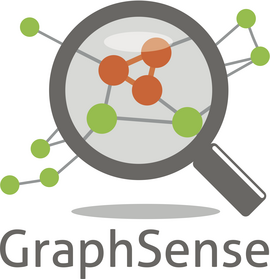Virtual currencies such as bitcoin are having a growing impact. Austrian researchers are working on algorithmic solutions designed to help us understand such systems and to detect any anomalies in them.
The creation of virtual currencies such as bitcoin demonstrates how new digital technologies continue to transform the financial world. Virtual currency units are generated decentrally and can be transferred around the globe within just a few minutes for minimal transaction costs. In contrast to existing currency systems, virtual currencies operate without centralised controls (e.g. central banks) and without using traditional payment service providers (e.g. banks). All the transactions ever conducted in bitcoin are displayed in anonymised form in the publicly available blockchain, and can be used for purposes of analysis.
The GraphSense project is developing algorithmic solutions for the real-time analysis of virtual currency transactions in order to provide insights into their function and transaction details. A particular focus lies on detecting so-called anomalies, i.e. identifying transactions and transaction patterns which deviate from standard structures. This allows potentially fraudulent activities to be identified and tracked at an early stage.
Real-time analysis of large network structures
The peculiarity and thus the scientific challenge of the GraphSense project lies in the structure and constantly growing volume of transaction data to be analysed.
The current total of around 100 million individual transactions form a transaction network in which bitcoin addresses and transactions are represented by hundreds of millions of nodes and edges. Algorithms designed to recognise anomalies in such large network structures need to be developed for horizontally scalable infrastructures (e.g. Apache Stark), and then tested for their practical application.
Generic applicability
As well as being used to detect anomalies in virtual currencies, the technologies developed as part of the GraphSense project can also be used in other areas of application such as diagnosing errors in industrial facilities, or detecting anomalies in energy networks. All the developed components are therefore available as open source software.
Facts
- Project start: September 2015
- Project duration: 2 years
- Funding: IKT der Zukunft, 3rd call – open application area
- Coordination: AIT Austrian Institute of Technology
- Partners: Braintribe IT Technologies GmbH, WU - Wirtschaftsuniversität Wien
Insight into Virtual Currency Ecosystems by making use of Big Data Technology
Bitcoin is the most prominent example of a virtual cryptocurrency and the use of Blockchain. The currency is not issued by any government, bank, or organization but relies on cryptographic protocols and a distributed peer-to-peer network of users to mint, store, and transfer currency units.
This talk will
- (I) briefly introduce virtual currencies and their technical characteristics,
- (II) present a selection of analytics features and describe their technical implementation,
- (III) and then focus on the computational (Big Data) challenges with building such a platform.
- (IV) possible future research directions.



